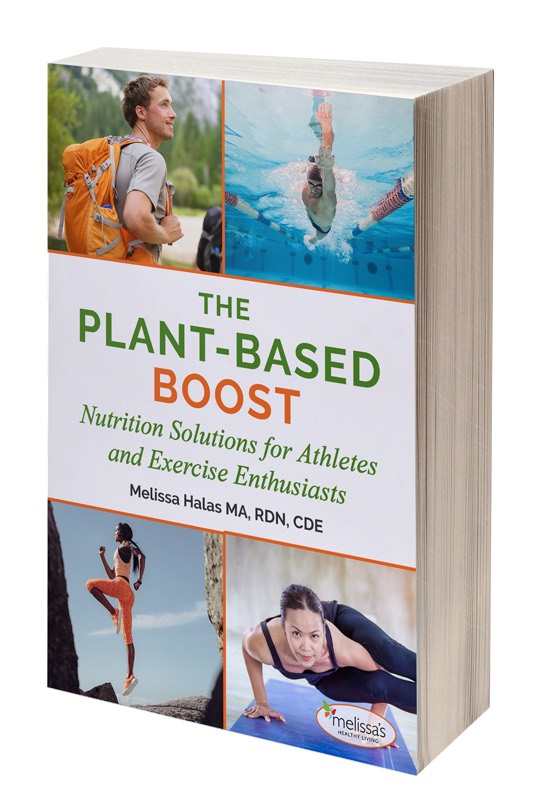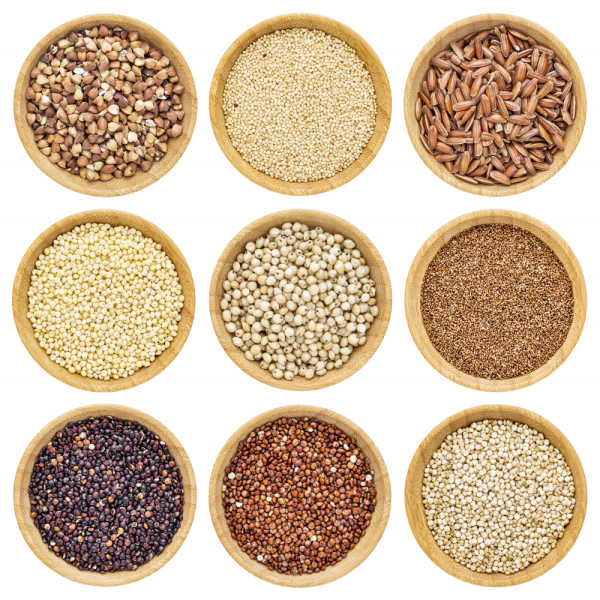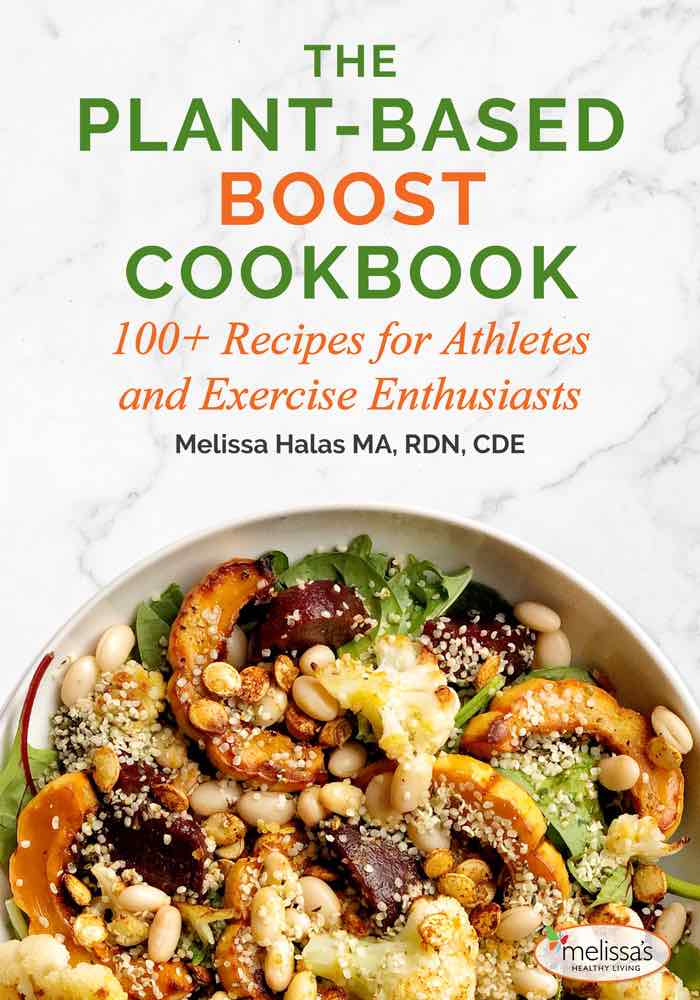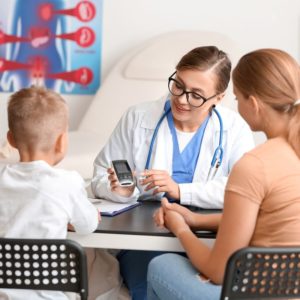
Whether your athlete has been plant-based for years or wants to try something new, experiment with this list of plant-based protein sources.
There are many different types of foods you can choose for your plant-based teen. Focus on variety throughout the day to make sure your adolescent’s nutrition is well rounded from several different plant-based protein sources. They can even have fun tracking their food choices with the two-week Powerful Plant Protein Tracker that comes with additional food ideas.
This post contains an affiliate link. As an Amazon Associate, we earn from qualifying purchases. The link is noted with an asterisk (*).
Legumes
Legumes are a versatile, flavorful, and low-cost protein option. You can buy dry beans or peas and cook your own, or buy cans of whole legumes or refried beans. If using canned, look for those low in sodium. Each type of legume has its own unique nutrient profile. Below is a list of the protein content of different varieties per ½ cup cooked serving. See which ones your teen likes best! (1)
- Adzuki beans: 9 grams
- Lentils: 9 grams
- Edamame: 9 grams
- Black beans: 8 grams
- Red kidney beans: 8 grams
- Pinto beans: 8 grams
- Garbanzo beans: 7 grams
- Black-eyed peas: 7 grams
- Fava beans: 6 grams
- Lima beans: 6 grams
- Green peas: 4 grams
Chickpea flour
With 21 grams of plant-protein per cup, chickpea flour is one of our favorites on this list of plant-based proteins. It’s a high protein flour option with a hearty, dense texture. It can be used as a baking substitution for half of the wheat flour in pancakes, pizza crusts, or other baked goods. Start experimenting!
Tofu
Tofu is made from curdled soybeans and has 27 grams of protein per cup. It comes in different consistencies, from extra firm to silken. If your teen has a tough time with one texture, try another. Add to stir-fries, use in soups or salads, use in sandwiches, marinate and bake, or make vegan scrambled eggs by mixing turmeric and crumbled tofu in a skillet. You can use a cast iron skillet* for an added iron boost.
Soymilk
Many non-dairy milk beverages have little to no protein, but the average protein content of soymilk contains 8.7 grams of protein per cup. (3) Opt for unsweetened soymilk to avoid added sugar and find a brand that fortifies with Vitamins A and D. It’s a great plant protein for teens to enjoy as a beverage with a meal, as a smoothie base, or paired with her favorite whole-grain cereal.
Whole Grains
Another key food category for plant-based protein is whole grains! Whole grains are a great way to boost your athlete’s plant-protein intake, and there are many tasty, different ones to try! Quinoa, spelt, wheat, wild rice, amaranth, barley, and farro are among the whole grains with the highest protein content. (2) Experiment with a whole-grain bowl or make a stir-fry with veggies, edamame, and sesame oil. You can also pair these grains with fruit and nuts and make a morning breakfast porridge. Yum! Check out The Plant-Based Boost, Nutrition Solutions for Athletes and Exercise Enthusiasts for a more robust list of whole grains, simple cooking times, and fun facts!
Tempeh
Tempeh is a fermented product made from soybeans and other grains such as millet or rice. It has a nutty, earthy flavor and has 11 grams of protein per 1/3 cup. (4) Tempeh offers a firmer texture than tofu, while still reaping the benefits of soy! Add tempeh into a stir-fry, use it as a base in sandwiches or wraps, or try it marinated and grilled.
Textured Vegetable Protein
Textured vegetable protein, or TVP, is made from soybean flour and has 12 grams of protein per ¼ cup. With its chewy texture, TVP is an excellent substitution for ground meat. Try it out in tacos, chili, burgers, or meatloaf. (5) Check out my cookbook for a delicious TVP burger recipe.
Chia Seeds
Chia seeds pack in 7 grams of protein per 3 tablespoons. Add pre-soaked chia seeds into pancakes or baked goods, mix into smoothies, or make a simple chia drink by mixing with soymilk or water.
Nut Butters
Each 2 tablespoon serving of peanut butter contains 7-8 grams of protein, with almond butter containing 7 grams. Both are good options to boost your teen’s daily protein intake. If there’s a peanut or nut allergy in your family, take a look at our chart for other nut and seed butter you can choose instead.
Spirulina/Algae
Spirulina is a type of blue-green algae with 4 grams of protein per tablespoon. (4) Spirulina powder makes a great addition to green smoothies or as a topping on popcorn or salad. It adds protein while also imparting a vibrant green color and unique sea flavor. Be aware that some varieties can contain toxic substances or toxic metals, so look for USP verification. This third-party certification ensures that the product contains safe levels of heavy metals and microcystin toxins (potential human carcinogens).
More Plant Protein for Teens

Curious as to how all of these plant-based protein sources fit into meals throughout the day? We’ve created a one-day sample menu for your vegetarian teen and a one-day sample menu for your vegan teen.
Want more plant-based tips? If you or anyone other adults you know want more of the inside scoop on plant-based eating check out our book, The Plant-Based Boost, Nutrition Solutions for Athletes and Exercise Enthusiasts!














